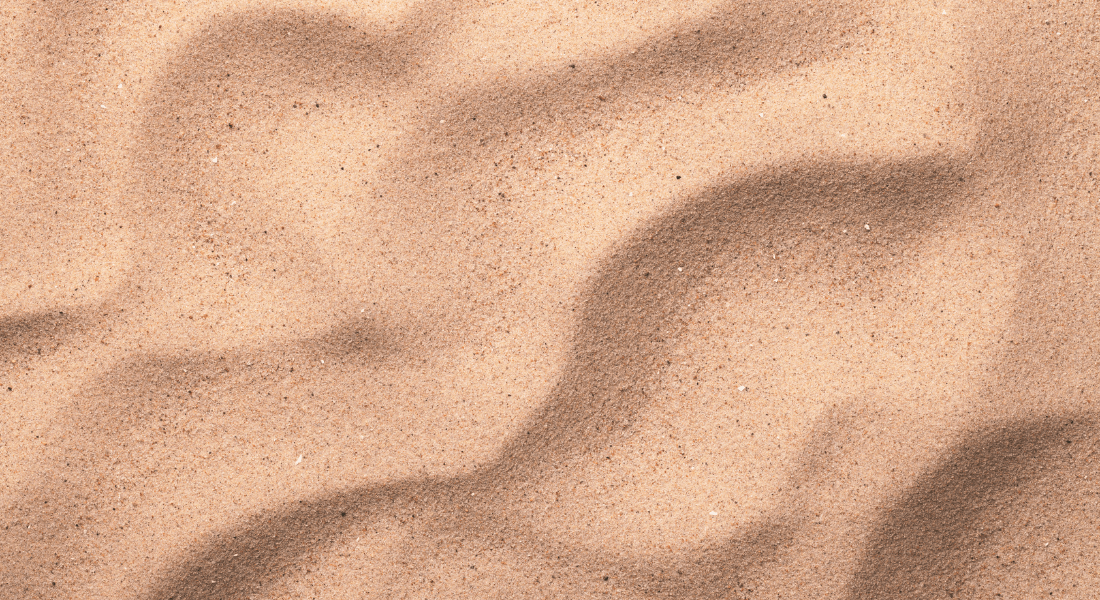Researchers raise the alarm: Antibiotic resistance can spread unpredictably into the environment
Researchers from the University of Copenhagen have learned that antibiotic resistant DNA can survive on the surface of minerals such as sand or clay, and this may increase the spread of antibiotic resistance from animals to humans.

Imagine one of Denmark’s many picturesque beaches, the waves lapping against the shore, the golden sand and the smooth pebbles. That sounds like a beautiful moment in time. But under the surface, there is more to the story.
A new study from the University of Copenhagen shows that the sand on that beach may contain antibiotic resistant DNA. Flow and currents in rivers, lakes, streams and the sea, suspend and move mineral particles making it possible for suspended DNA to attach and travel long distances, Karina Krarup Sand from the Globe Institute at the Section for GeoGenetics explains.
“The DNA that codes for antibiotic resistance may have been carried into the environment by wastewater from hospitals or farming. If left alone in the water column the DNA will degrade fast, but if it binds to bypassing mineral surfaces the DNA can be stabilized and survive. Deposited minerals can thus act as a sort of gene library carrying genes from one environment to another, and this may cause antibiotic resistance to spread,” says Karina Krarup Sand.
Even though the DNA is bound to the particles, local bacteria can incorporate the DNA and become resistant. Once incorporated, the resistance can spread rapidly to neighbour bacteria and to offspring. In this way, antibiotic resistance can spread unpredictably to new environments, - even though these bacteria have never seen a high-resistance environment.
Researchers appeal for action
According to the new study, the type of mineral plays a large role for how fast bacteria can incorporate mineral-bound DNA and how fast the obtained trait is disseminated throughout a community. In addition, some mineral grains can both up-concentrate and preserve DNA, while others can only carry a few molecules.
The researchers hope to be able to find an antidote of sorts, a mineral compound that can prevent bacteria from incorporating the DNA or the DNA from spreading in biofilm.
“We hope to be able to find a surface that can prevent antibiotic resistant DNA from spreading. This could be part of the solution. For instance, such a compound could be mixed in with manure, or a filter could be installed on pipes carrying wastewater from hospitals,” Karina Krarup Sand says and adds:
“So far, though, we haven’t been able to find a mineral compound capable of preventing the dissemination of antibiotic resistance.”
The study shows why it is so important to reduce the discharge of antibiotics into the environment in order to stop the spread of antibiotic resistance.
The researchers appeal to the authorities and society in general to focus attention on the issue.
“We hope our results can contribute to the development of effective strategies to mitigate the dissemination of antibiotic resistance and protect the health of humans and animals. It is vital that we continue to research and increase knowledge of the complex mechanisms driving the dissemination of antibiotic resistance to our environments,” Karina Krarup Sand says.
Read the entire study: Reconciling the role of mineral surfaces for bacterial evolution: Importance of minerals in the dissemination of antibiotic resistance.
Contact
Associate Professor Karina Krarup Sand
+45 35 32 41 11
kks@sund.ku.dk
Kommunikationskonsulent Sascha Kael Rasmussen
+45 93 56 51 68
sascha.kael.rasmussen@sund.ku.dk
